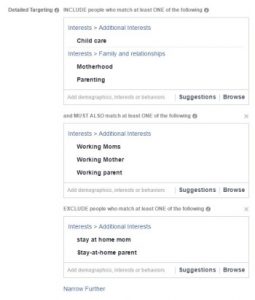
What is that unknown factor that causes some small businesses to fail while others thrive? The statistics on small business failure are daunting.
Out of 23 million small businesses in America, the Statistic Brain estimates that after 10 years of business, 71% of those businesses will have failed.
Some industries have higher success rates than other industries, such as the information sector. However, what is even more interesting when you dig a bit further into the statistics are the reasons for failure.
- Lack of planning
- Living too high for the business
- Expansion too rapid
- No knowledge of suppliers
- Wasted advertising
In a nutshell, most businesses fail because management fails to plan ahead, fails to study the demands of the industry and fails to keep on top of day-to-day operations.
People Want To Succeed
Over the years, I’ve consulted with with different types of small business owners, from those involved in direct sales, to writers and artists to people wanting to open the local bakery. These people all have a passion for the businesses they start and they all have a desire to succeed.
However, as with most thing, a desire to succeed isn’t the only thing one needs. There are many facets to starting a successful business.
Before Opening
If you’ve not yet opened your small business, the best place to start is with a transition plan to move you from working for someone else to working for yourself.
A good exit strategy away from being an employee toward being your own boss (and probably the boss of other people) includes studying the market, creating a personal budget, saving up emergency expenses and planning out the smallest detail of your move.
However, if you’re already a small business owner, don’t worry. You can still salvage a floundering business and make it thrive.
Shopping Mall Model
A number of years ago, a friend of mine was talking about using a shopping mall model to grow her freelance business. I used that basic idea and expanded on it to create a shopping mall of my own that has allowed me to successfully grow my own freelance business. I’ve shared this model with my clients as well and they have found it useful. Here is a blank outline of my mall:

Whether you sell articles or you have brick and mortar business with customers, this model works. It also keeps you moving and working toward filling all those empty slots. Like any good mall manager, you will come to understand that the anchor stores bring in the big revenue, but the mall runs on a mix of large and small stores.
- Anchor – The anchors are your biggest customers. You can rely on them for a steady amount of work every week/month/quarter. You don’t have to go out and drum up new business. You can count on these loyal customers. In a real mall, these would be stores like Macy’s, JCPenney, and Dillard’s. Let’s say you own a bakery. The local electric company buys desserts from you every week for their companywide meeting.
- Specialty – Next are your specialty clients/customers. These people come in regularly and order desserts but their orders are small. This is the business next door that has five employees or the wedding planner who has you bake a cake once a month. You can also count on these clients, but they are not as big as your anchors. However, they are just as important.
- Kiosks – Just like in a regular mall, kiosks are temporary. These are the clients/customers that come and go. A regular customer brings her friend into your bakery and she buys two dozen cookies, but she lives two states away, so you probably won’t see her again. Sometimes, you can turn kiosks into specialty stores or even anchors. Look for opportunities to do so. This is your biggest opportunity for growth.
- Parking Lot – You may also have the once a year customer. Let’s say the local cabinetry maker employs about 200 workers and once a year he has a big dessert buffet for them, which he has you cater. This is a solid gig and worth taking on if you have the time, but he isn’t going to keep you in steady work. Don’t neglect your anchor or specialty customers for a kiosk or parking lot customer.
- Restrooms – This really speaks for itself. Let me say that these clients are rare. I’ve been freelancing for nearly 19 years and have had two such clients in all that time. Once thought it was okay to curse at me and call me at 4 a.m. The other client stopped paying and disappeared off the face of the earth. Failed business perhaps?
Making Room For New Clients
The first thing you have to do every year is look through your client list and figure out which stores in your mall are growing your business or that you simply love working with. As your business grows, you may have to turn away that once a year dessert buffet to make room for a steady specialty store or two.
Any businesses in the restroom area (and if you are like me, it takes a lot to get into that category) should be nicely let go. Be professional. Take the time to call and explain that you simply don’t have room for them on your client/customer list at the moment. Wish them the best and move on. You never know when a new manager will take over and they will become a dream client, so try not to be blunt about letting them go.
Reaching New Clients
If you want to grow your business, you need to constantly reach out for new clients. There are so many ways to grow your business, that it would be impossible to list them all in this article. We offer excellent marketing advice right here at WHSR. If you’re unsure how to market, I recommend you start with:
- 10 Essential Rules For Effective Google+ Marketing In 2015
- Inbound Marketing Strategy For Your Website
- Smart Link Building (And Web Marketing) For The Average Guys
When you first start studying new ways to reach clients, it can become overwhelming. Stick to the basics. Ask happy customers to tell others. Provide incentive to do so.
Word of mouth is still the most powerful marketing tool there is. According to a Nielson survey, 92 percent believe in a product or service when it is recommended by a family member or close friend.
Getting Help
Is your business at that point where you really need some help to take it to the next level but you just can’t figure out where the money to hire another worker is coming from? This is a difficult situation for any business to be in.
If you’re fortunate enough to hit this point over the summer, you may have the chance to hire an intern who wants experience in your industry. If that isn’t an option, decide which tasks you would most like to delegate and find someone who can do that work on a part-time basis, or whatever you can afford.
Let’s use the bakery example again. My client had taken her bakery to a level that she could not keep up with the orders any longer. She hired a woman to help her in the kitchen, but even then they could not keep up. More and more corporate clients wanted to place orders and she had to turn them away because she knew she couldn’t fulfill their weekly demands.
Instead of turning them away, I suggested she seek out some high school students through a local program offered at a nearby school that was a culinary program. The girls wanted experience to put on their resumes and they would work for cheap. While she did have to plan around their school schedules, they came in two or three evenings a week and helped her oversee those big corporate orders, which would be ready the next day for her corporate clients.
However, this did create another problem. She couldn’t be at the bakery from four p.m. until 10 p.m. every single day. Burning the candle at both ends like that is never a good idea.
Her solution? When the oldest girl graduated from the program and mentioned she wanted a job, she offered her an evening manager job and brought in another student to take her place as a baker. The bakery still closes at 6 p.m., but there are people there working until 10 p.m. Also, if she needs to get away for a few hours in the afternoon, she knows her manager has things under control.
Fixing Minor Issues/Looking Ahead
Figuring out how to make that leap from working alone to employing others and delegating tasks is a big one. Once you’ve gotten past that issue, it’s time to look at other issues that may be holding your business down.
- Lack of innovation (what’s new?)
- Failed marketing (where are your customers?)
- Poor organization
- Lack of cash flow (harder to solve, but often just requires a stricter budget)
- Customer service or delivery issues
Fix any minor issues. Brainstorm with those excellent employees you hired to find out where your company’s weaknesses are and what their ideas are for fixing them. Then, look ahead.
You’ve gotten past the floundering stage. Did you realize it will happen again if your business continues to grow? What is your plan to get over the next hurdle? For my client, it might be taking her bakery online and creating a mail order component to her business. It never hurts to dream big. With a little planning, you never know where it might take you.
(306)







